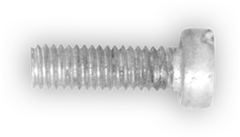



Holditinplaceormoveitalong.Screwsdobothjobsallday long.
ByGlen Phelan
Simple
Machines
Explorer magazine’ssix‑part series
SimpleMachines
Explorermagazine’ssix‑part series
This edition
HumanJourney
PhysicalScience
Engineersimproveexistingtechnologies.Afteryouhavecompletedtheactivity,thinkofwaystoimprove it.